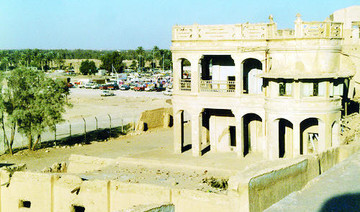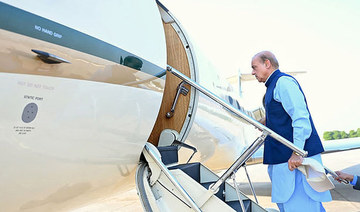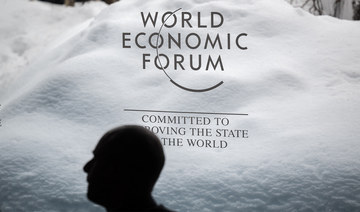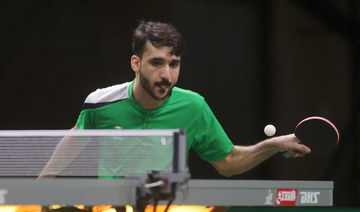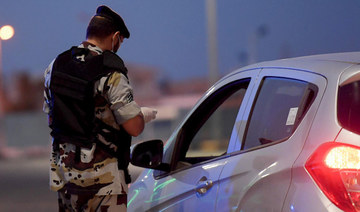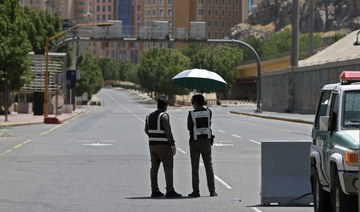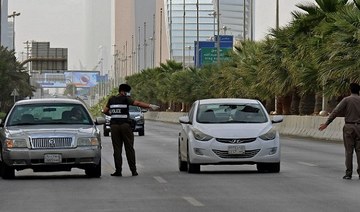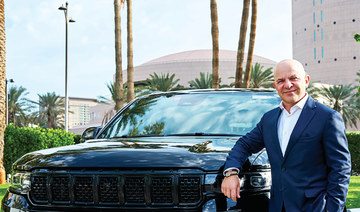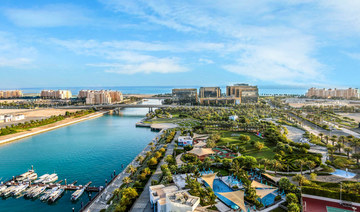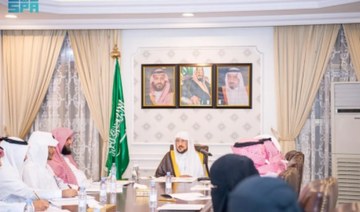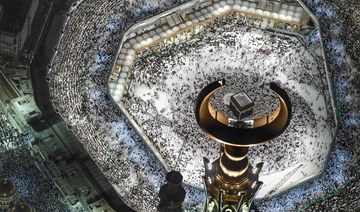RIYADH: The King Abdul Aziz Palace in Al-Muwayh in Makkah province was built in 1357 AH of stone in an ancient Islamic architectural style amid the ruins of mud houses. It was the residence of the founder of Saudi Arabia, King Abdul Aziz. He used to rest in it during his trips between Riyadh and Makkah and on his way to Hajj, Umrah or summer vacation.
Whenever King Abdul Aziz arrived in Al-Muwayh, he was received by its governor, judge and the governorate’s officials. In addition to meeting them and urging them to look into the citizens’ issues, the king would also meet the locals, discuss their concerns and explore their needs.
King Abdul Aziz Foundation for Research and Archives (Darah) said the palace occupied an area of 14,850 square meters and played a significant role in turning the arid desert into a modern city with decent living standards.
Al-Muwayh, a name derived from “Ma’a”, meaning water in Arabic, is 180 kilometers east of Taif. King Abdul Aziz rested here several times in his quest to unite the Kingdom of Saudi Arabia.
Fouad Shaker, author of “Rihlat Al-Rabi’e” (The Journey of Spring), published by Darah, wrote about King Abdul Aziz’s trip from Makkah to Riyadh in 1365 AH: “From Makkah to Riyadh, we had reached Al-Muwayh, a small village made big by its luxurious architecture, one of the privileges of this glorious Saudi era. The government of King Abdul Aziz had built in that remote and unknown area a luxurious royal place for the king to rest during his travels between Makkah and Riyadh.”
Darah explained that the palace was designed in different forms for fortification and defense, creating a structure with outstanding architectural specifications, surrounded on all sides by walls built of black stone 4.5 meters high and 90 centimeters thick. The complex comprises the royal palace, which is a rectangular building located on the western side of the citadel. It has two entrances, the first of which is the main entrance from the south. It contains several building blocks with 19 benches to the left after entering through the main north gate, the official “Al-Mokhtasar” assembly hall, a dining room, a bedroom and a toilet.
The complex also includes a guest palace, which is a rectangular building adjacent to the royal palace to the east and comprises a range of rooms overlooking the open courtyard with a 3.4-meter-wide main entrance from the north.
In addition, the palace has several towers, two coffee-making rooms, toilets, lodgings for guests, guards and servants, a gas station outside the southern side of the citadel, lodging for the gas station’s workers, and the residential palace, which is a rectangular building in the center of the citadel on the southern side.
The residential palace has six rooms, four of which are bedrooms and one is a living room, in addition to a kitchen, a storage room and a toilet. It also includes lodging for workers, while the towers and attached buildings accommodate the palace’s staff and their families. Sometimes, they were used to accommodate non-official guests. Sheep sheds and warehouses for feed and firewood are located in the eastern part of the residential palace’s courtyard.
Moreover, the King Abdul Aziz Palace compound contains the administrative palace, which is a rectangular building with two entrances, one from the south and the other from the east, in addition to two other entrances, the first of which leads to the mosque while the second leads to the residential palace.
A medium-size mosque is located to the west of the administrative palace and adjacent to the judge’s residence. It has an open-air rectangular courtyard that stretches over 22 meters from west to east and 19.90 meters from north to south.
The judge’s office is located north of the mosque in the palace compound. It is a rectangular building with six rooms, a small hall and a courtyard.
The palace has six observation towers, two of which rise above the northern and southern gates while the remaining four are in the corners of the citadel to secure and defend the palace.
The average length of the north, west and southeastern elevations is 155 meters, while the average length of the south, west and northeastern elevations is 120 meters. The palace’s main gate is in the center of the northwestern elevation, and another gate was set up in the southeastern elevation to serve as an entrance to the emirate.
According to Darah, the airport in which the king’s first airplane landed is northeast of the King Abdul Aziz Palace and the ancient city of Al-Muwayh. The airport comprises a four-room reception hall, a sandpit, and a mosque named King Abdul Aziz Mosque amid the mud houses. The mosque has maintained its original structure but was damaged, making it unfit for holding prayers after Al-Muwayh was transferred to the new location known as the New Al-Muwayh on the Riyadh-Taif highway.
King Abdul Aziz Palace: A perfect blend of history and architecture
King Abdul Aziz Palace: A perfect blend of history and architecture
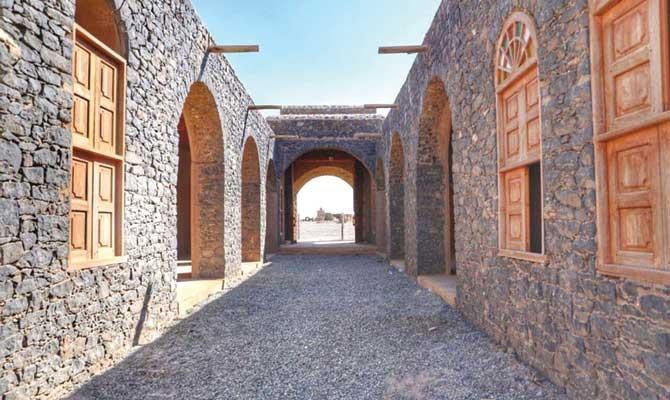
- The palace has six observation towers, two of which rise above the northern and southern gates while the remaining four are in the corners of the citadel to secure and defend the palace
- The complex comprises the royal palace, which is a rectangular building located on the western side of the citadel
Riyadh prepares for WEF meeting on collaboration, growth and energy
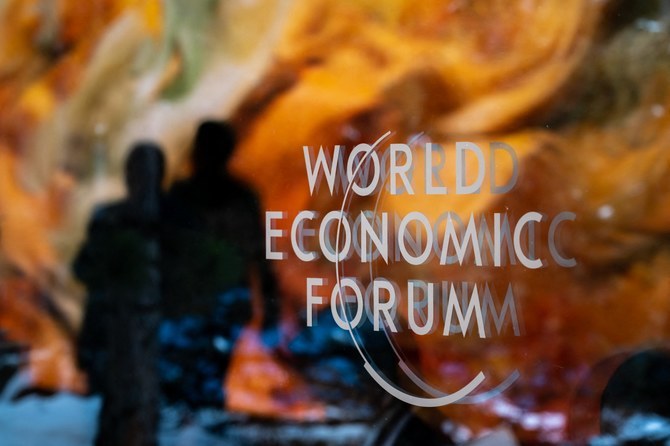
- Meeting aims to bridge growing North-South divide and find ‘collaborative solutions to shared challenges’
- Will drive ‘action-oriented dialogue’ on three key themes: Inclusive Growth, Energy for Development, and Global Collaboration
RIYADH: Around 1,000 leaders from 92 countries will convene in Riyadh for the World Economic Forum’s Special Meeting on Global Collaboration, Growth and Energy for Development on Sunday and Monday.
Building on the inaugural Growth Summit in Switzerland last year, the Riyadh meeting will, according to the WEF, “promote forward-thinking approaches to interconnected crises, while remaining realistic about shorter-term trade-offs” and “work to bridge the growing North-South divide on issues such as emerging economic policies, the energy transition and geopolitical shocks.”
Børge Brende, WEF’s President said in a press release: “With geopolitical tensions and socio-economic disparities deepening divides globally, international collaboration and purposeful dialogue has never been more urgent.”
The special meeting, held under the patronage of Crown Prince Mohammed bin Salman, provides an opportunity for leaders, according to Brende, to “turn ideas into action and unlock scalable solutions to the many interconnected challenges being faced.”
Saudi Economy and Planning Minister Faisal Al-Ibrahim said in the release: “At this global inflection point, revitalizing international collaboration has never been more important. In Saudi Arabia, the World Economic Forum has chosen an established and dynamic global platform for thought leadership, solutions and action, as the host of a critical meeting at such a critical moment.
“We are working to ensure that progress for one part of the world does not come at the expense of another. And we are committed to meeting this moment with a determination to co-author a shared future that is secure, stable and sustainable,” he continued.
The event’s three themes are: ‘A Compact for Inclusive Growth,’ ‘Catalyzing Action on Energy for Development,’ and ‘Revitalizing Global Collaboration.’
Participants will include Mishal Al-Ahmad Al-Jaber Al-Sabah, the Emir of Kuwait; Egyptian Prime Minister Mostafa Kamal Madbouly; Iraqi Prime Minister Mohammed Shia Al-Sudani; Bisher Al-Khasawneh, Jordan’s Prime Minister; Malaysian PM Anwar Ibrahim, Pakistani PM Shehbaz Sharif; Palestinian president Mahmoud Abbas; Qatari PM Mohammed Bin Abdulrahman Al-Thani; US Secretary of State Antony Blinken; Josep Borrell, High Representative of the European Union for Foreign Affairs and Security Policy; Stéphane Séjourné, French minister for Europe and foreign affairs; Annalena Baerbock, Germany’s federal minister of foreign affairs; David Cameron, UK secretary of state for foreign, Commonwealth and development affairs; Kristalina Georgieva, managing director of the International Monetary Fund; UN Senior Humanitarian and Reconstruction Coordinator for Gaza Sigrid Kaag; and World Health Organization Director-General Tedros Adhanom Ghebreyesus.
Adhlal organizes tech workshops
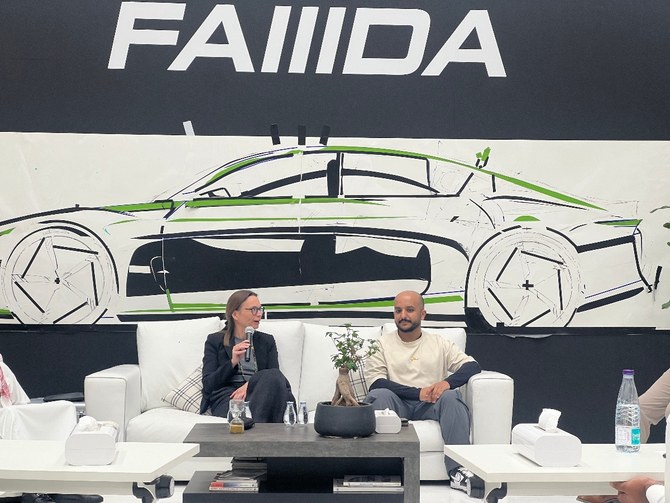
RIYADH: Consulting services company Adhlal, a social enterprise based in the Kingdom, recently organized three technology workshops at the studios of Faiiida, an industrial design company, in Riyadh.
Tanja Ludwig, founder of w3-ff venture builder; Rakan Al-Shehri from Adhlal; and Abdulaziz Alobaid, who developed Faiiida, ran the workshops, which looked at ways in which technology, including artificial intelligence, can enhance creative workflow.
Ludwig, a German national who has visited Saudi Arabia several times, explored how blockchain’s “decentralized identities can empower Saudi design professionals.”
Alobaid’s workshop was on virtual and augmented reality design. Alobaid discussed creating items for the fashion, consumer, and automobile industries.
Al-Shehri’s workshop, titled “Al for design: Boosting creativity with smart tools,” explored how Al tools can help boost creativity in various fields of design.
Saudi authorities arrest 19,050 illegals in one week
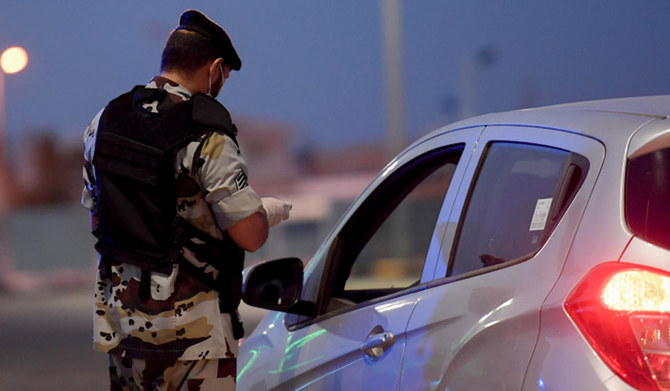
RIYADH: Saudi authorities arrested 19,050 people in one week for breaching residency, work and border security regulations, the Saudi Press Agency reported on Saturday.
According to an official report, a total of 11,987 people were arrested for violations of residency laws, while 4,367 were held over illegal border crossing attempts, and a further 2,696 for labor-related issues.
The report showed that among the 1,011 people arrested for trying to enter the Kingdom illegally, 61 percent were Ethiopian, 36 percent Yemeni, and 3 percent were of other nationalities.
A further 24 people were caught trying to cross into neighboring countries, and 18 were held for involvement in transporting and harboring violators.
The Saudi Ministry of Interior said that anyone found to be facilitating illegal entry to the Kingdom, including providing transportation and shelter, could face imprisonment for a maximum of 15 years, a fine of up to SR1 million ($260,000), as well as confiscation of vehicles and property.
Suspected violations can be reported on the toll-free number 911 in the Makkah and Riyadh regions, and 999 or 996 in other regions of the Kingdom.
Environment Week highlights KSA’s role in green era
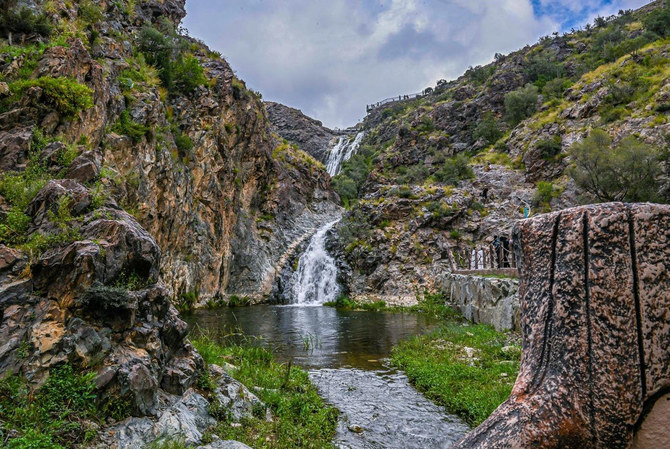
RIYADH: Saudi Arabia’s Environment Week 2024 will begin on Sunday, emphasizing the Kingdom’s leadership in environmental preservation and sustainable development.
The event reflects the Kingdom’s dedication to environmental issues, aiming to raise awareness across society, according to the Saudi Press Agency report.
Organized by the Ministry of Environment, Water and Agriculture, the event features workshops, lectures, field activities and awareness campaigns designed to encourage citizens to protect natural resources and support sustainable development.
Minister of Environment, Water and Agriculture Abdulrahman Al-Fadhli will inaugurate this year’s week, where he will discuss the Kingdom’s accomplishments in environmental protection and sustainability.
Saudi Arabia is among the countries prioritizing the environment and sustainable development, with comprehensive strategic plans to balance economic growth and environmental protection.
Since the launch of Vision 2030 in 2016, the Kingdom has made significant strides toward a more sustainable ecological future.
The Kingdom has implemented a national strategy for the environment and introduced a series of national laws, strategies and plans to protect and sustain the environment, the SPA reported.
Additionally, the Kingdom has launched several groundbreaking national initiatives to promote environmental conservation, including the Saudi Green and Middle East Green initiatives.
The ministry has adopted a plan to develop Saudi Arabia’s waste sector, aiming to recycle up to 95 percent of waste and contribute SR120 billion ($32 billion) to the country’s gross domestic product. The plan also targets recycling up to 100 million tons annually to promote sustainability.
Since its launch in 2021, the Saudi Green Initiative has supported environmental protection, the transition to cleaner energy and sustainability programs. These efforts aim to reduce carbon emissions, increase afforestation, rehabilitate land and protect both terrestrial and marine areas.
Saudi Arabia’s environmental progress coincides with a 10 percent reduction in dust storms, linked to the establishment of reserves, increased rainfall, the rain-seeding program, the preservation of more than 94,000 hectares of land, and the planting of more than 49 million trees across the Kingdom. Additionally, the country has launched a global center for sustainability solutions using artificial intelligence, achieving an early weather warning accuracy rate of 78.76 percent.
The ministry encourages all government and private agencies, as well as community members, to participate in the event’s activities to foster a more sustainable future. This initiative aims to spread environmental awareness, promote community responsibility and encourage positive environmental behaviors.
Not permissible to perform Hajj without permit - Council of Senior Scholars
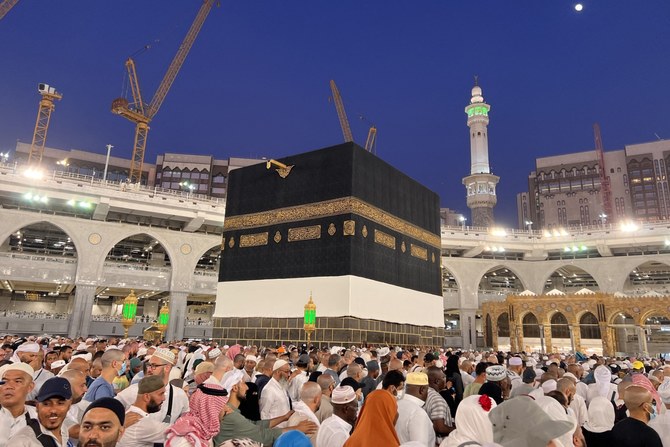
RIYADH: The Council of Senior Scholars in Saudi Arabia said in a statement that it is mandatory for Muslims to obtain a Hajj permit if they will perform pilgrimage.
The council said obtaining a permit is obligatory to comply with the Sharia law, and facilitate Hajj and safeguard the sanctity of the Holy Sites. Performing Hajj without a permit is deemed a sin, according to the council’s interpretation.
It made it clear that it is not permissible to go to Hajj without obtaining a permit and “those who do so are committing a sin,” the statement read.
The council's statement notes that government agencies responsible for organizing the Hajj season develop a comprehensive plan based on authorized numbers that cover all aspects, including security, health, accommodation, catering, and other services.
The more the number of pilgrims is consistent with the authorized figures, the better the service quality and the lower the risk of harm, it said.
This includes preventing situations such as sleeping on the roads, which can impede their movement and transportation and may lead to casualties due to overcrowding.


